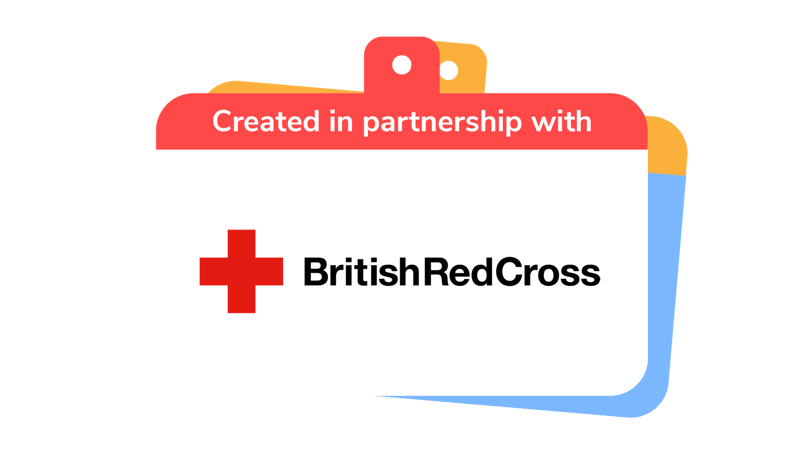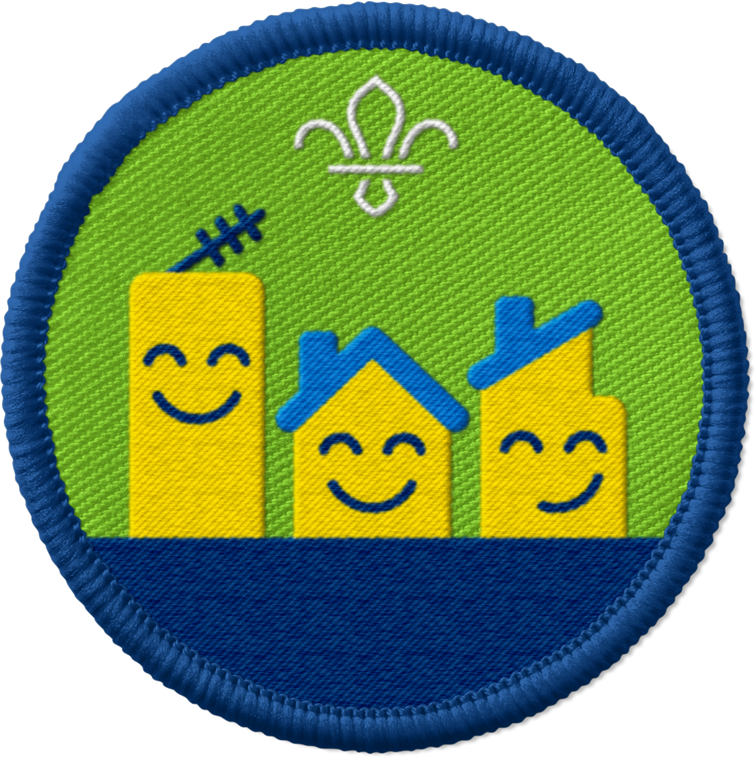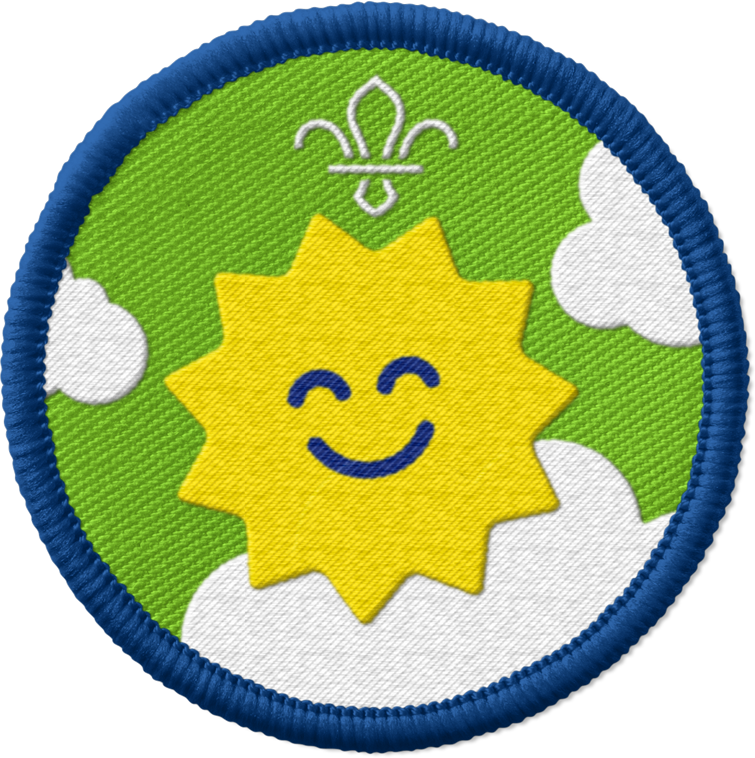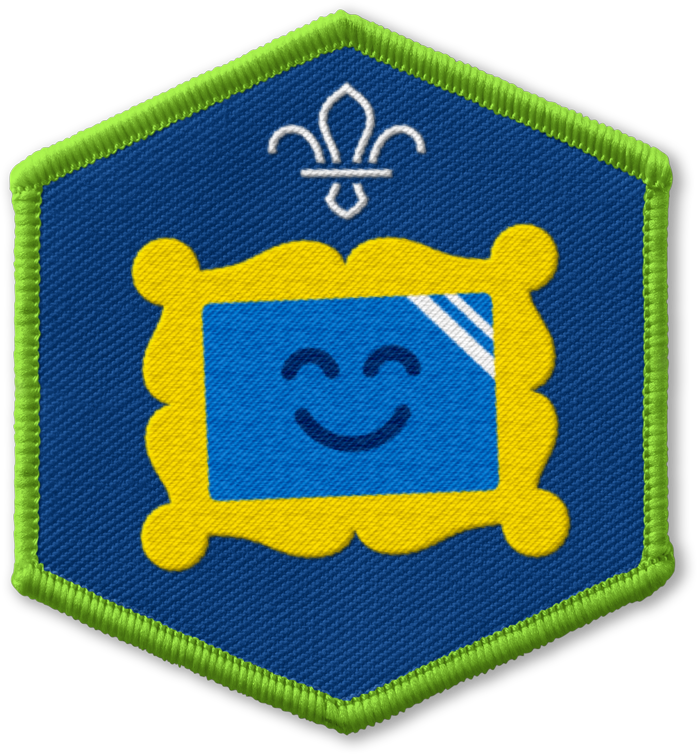
Helping hands
You’ll need
- Paint
- Paint brushes
- Plates
- A4 paper
- Scissors
- Pens or pencils
Before you begin
- Make some example hands so you can show everyone what they’re aiming for.
- Put the paints onto plates.
- Fill up some washing up bowls with water.
- You’ll need to begin this activity at the start of your session so the paint has enough time to dry. You could also run the activity across two sessions.
Story time
- Everyone should sit in a circle.
- Someone should read Friendly Fashion by The British Red Cross. Make sure you save a copy before the session.
- After reading the story, everyone should take some time to reflect on it as a group. We’ve included some questions to help you reflect in the pink box below.
Abi still remembers the moment she fell in love with fashion. It was when she came across a pair of beautifully embroidered denim shorts.
So began Abi’s passion for all things fashion. She loved wearing very high heels, dying her hair purple, and using a bright pink mobility aid.
However, Abi discovered that fashion wasn’t easy for everyone to enjoy. It was hard for people from Black, Asian or other ethnic backgrounds. It was also hard for people with disabilities.
Abi has a visual impairment. This means she can’t see as well as other people.
When Abi first got interested in fashion, she had to rely on other people to explain what clothes looked like when she went shopping
Fashion was Abi’s way to express herself. She felt that by making it hard for her to enjoy fashion, designers and shops were saying that fashion wasn’t for her. Have you ever felt left out? What could have been done to make you feel more included?
In November 2019, Abi began making a film called Diversity in Fashion – Time for Change.
For the film, she spoke to different people who have jobs in the fashion industry. They design, make or sell the fashionable clothes we like.
Abi explained how important it is to show that anyone can enjoy fashion and feel fashionable.
The more we see people who look like us enjoying things, the more we feel included, confident and comfortable to express who we are. When do you feel most confident or comfortable?
Sometimes, it can be hard to speak out when we see someone being excluded, or to stand up for things that we care about.
Abi knows how important it is to do this. We shouldn’t be scared of people’s differences. We need to be open to them and adapt what we do and how we do it to make sure everyone can be involved.
‘There’s so much value in difference,’ says Abi. ‘There's so much value in our stories, what we've got to say, our perspective. We can't just have a carbon copy of opinion and depictions.
‘We need everyone. That's why I feel the value is in everybody. We’re in the world together, all our voices matter, our value needs to be recognised, and that value comes from our diverse perspectives.’
Paint-y palms
- Everyone should split into small groups. Each group should sit in a circle.
- The person leading the activity should explain how small messages of kindness can help people. For example, they can remind people that they’re not alone and help them remember that people are thinking of them.
- The person leading the activity should give everyone some paper. They should put some different coloured paints, bowls of water, and pencils in the centre of each circle.
- Everyone should write their name or initials in one corner of their piece of paper.
- Everyone should think about words or sentences that make them happy. Which colours do they like to look at?
- Everyone should choose what colour they want to use, put their hands in the paint, and make paint handprints on their paper.
- The person leading the activity should put all of the handprints out of the way to dry.
- Everyone should play a quick game (or do another activity) while they wait for the paint to dry.
Helping hands
- Everyone should get back into their circles with their dried paint handprints and some pens or pencils.
- Everyone should decide on kind words or messages to write on their handprints.
- Once everyone’s finished writing or drawing on their hands, they should roughly cut out each hand. Now they’re ready to make a difference.
- Everyone should decide what to do with their healing hands. They could take them home to give to the people they live with; take them to school, nursery, or another group and give them to people there; or find a shared place in the community to display their hands.
Actions you could take
Kindness jars
Put a smile on someone's face by making them a kindness jar full of kind words and their favourite things.
Make kindness jarsHand out helping hands
Create lots of helping hands to give out in your local community. You could take them to school, the library or the shops. Anywhere where you can help make people smile.
Hand out helping handsKindness rocks
Decorate some rocks together to leave around your local area. You could show how a kind message can make all the difference when helping someone and write one for a friend in need.
Make kindness pebblesReflection
This activity encouraged everyone to think about what makes them happy and how they can spread kindness in their community.
Story time
- What is your favourite thing to wear?
- How could you help someone enjoy something that you enjoy?
Paint-y palms
- Why did people choose a specific colour of paint?
- Did people find it fun getting their hands dirty as they made something?
Healing hands
- Was it difficult to cut out the hands?
- How did it feel to give the healing hands away to people?
Safety
All activities must be safely managed. You must complete a thorough risk assessment and take appropriate steps to reduce risk. Use the safety checklist to help you plan and risk assess your activity. Always get approval for the activity, and have suitable supervision and an InTouch process.
- Scissors
Supervise young people appropriately when they’re using scissors. Store all sharp objects securely, out of the reach of young people.
- You might want to have some examples to help people think of kind words to add to their hands.
- You could print and cut out some handprints before the session that people could use instead of creating their own.
- It’s OK if some people don’t want to get paint on their hands. They could draw around their hands with a pencil and colour them in instead of dipping them in the paint.
- People could draw happy or silly faces instead of words or phrases if that works better for them.
All Scout activities should be inclusive and accessible.
Take the healing hands home to share with friends and family, or others in your community, to help spread kindness and positivity.
Discover more at https://www.redcross.org.uk/
Encourage everyone to choose their own colours, messages, and faces by thinking about what would make them happy.


